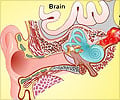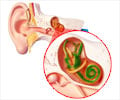How can we Diagnose Vertigo?
Vertigo is diagnosed with the help of a patient’s history and physical examination.
The doctor questions the patient regarding the duration and severity of the dizziness spell. He also looks for physical signs like fast, uncontrolled eye movements called nystagmus and other abnormal eye movements.
The doctor might advise the following tests:
- Dix-Hallpike test- The head is moved in different directions and the eye movements are assessed and seen whether they correlate with the vertigo symptoms.
- Computerized dynamic posturography- The patient is asked to stand on a movable platform and his/her responses to movement are recorded.
- Electronystagmography- Eliciting nystagmus (the abnormal oscillating movement of the eyes) can help determine if the symptoms are those of true vertigo.
- CT scan and MRI may be required to rule out brain tumor.
- Audiometry is a thorough test of various hearing abilities.
- If an infection is suspected, a doctor may take a sample of fluid from the ear or sinus or from the spine by lumbar puncture (spinal tap).

















